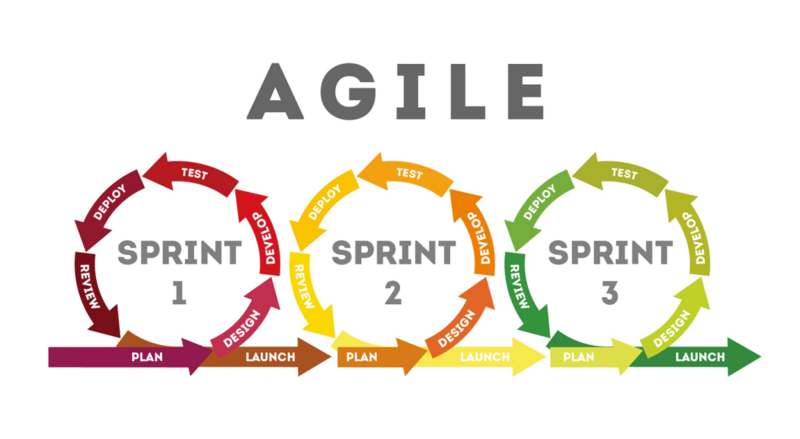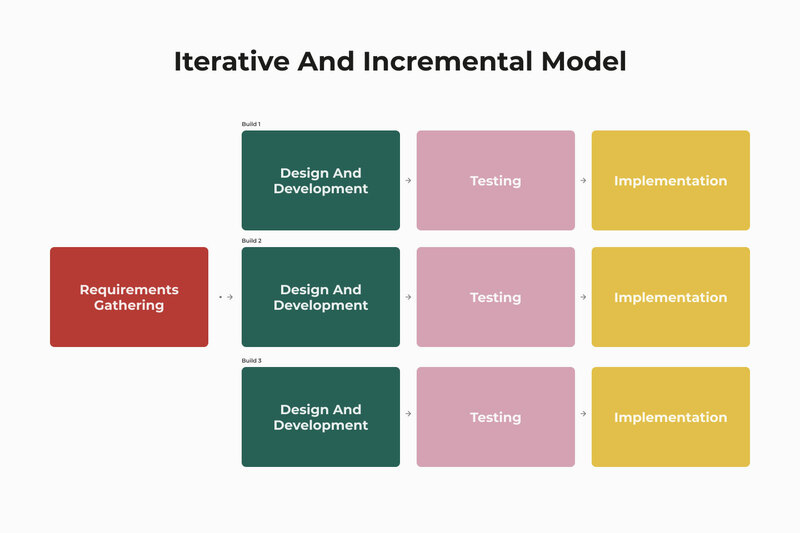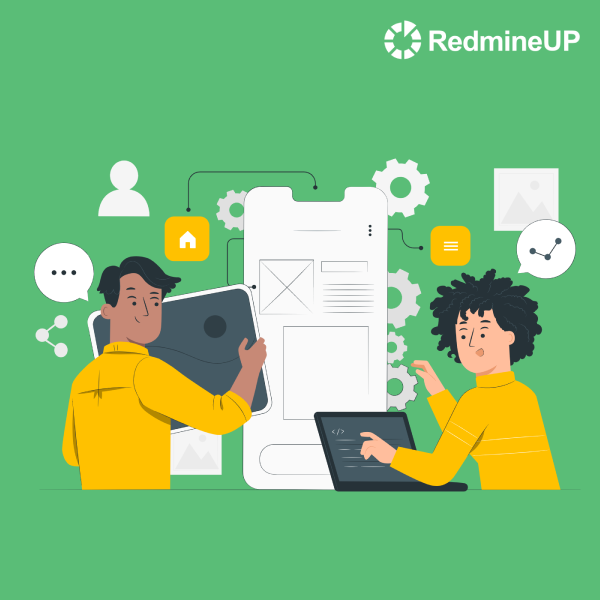The term software has been essential in any discourse since program coding entered the public domain in the 1960s. Once quite chaotic, the software development process has acquired a clear framework now. .
In today’s post, we are going to discuss the software development life cycle and its common management models so that you will be able to find the best tool for your business. Stay tuned!
With this article, you will learn the following:
- Software Development Life Cycle (SDLC): Basics
- Six Key Stages in Software Development
- Popular Software Process Models
- How to Pick the Right Software Development Process?
Software Development Life Cycle (SDLC): Basics
Software Development Life Cycle is a unified guide to document every stage in making a piece of software. That is to say, this step-by-step approach guarantees to cover the whole software path from idea to launch. SDLC involves creating the end-product (or output) needed by the next stage, be it a survey, design, program, or just an abstract idea.
The main idea is to perform high-quality software on time and budget, that is why a software development team needs a clear roadmap. Still, we should bear in mind that any IT product is never completely finished: no sooner is it released, another part, which is tech support, begins. So, while people use the IT solution, its SDLC represents a continuous loop.
That being said, let’s go back to the reasons why teams should really stick to a structured software development plan:
- Clear roles allocation
- Defined expectations between all stakeholders involved
- Common definition of “Done”
- Detailed instructions (each issue is formalized, e.g. fixing bugs)
- Being in scope all the time

Now, all out on the table, let’s cover six basic steps which define the software development process and form its life cycle.
Migrate to secure hosting
Don't waste your time on Redmine maintenance. Hire experts and focus on your projects
Six Key Stages in Software Development
1. Market Research and Planning
Once you have got a software request, you need to assess the current offers and take advantage of your direct competitors: what is already available on the market? what tricks can you use to better your future product?
Then start visualizing the desired project output. On a larger scale, how is it connected to your company’s mission? Does it match with your goals? Are your resources enough to perform it? How much is it going to cost? These questions are crucial to consider before you actually start developing software. Here what any team really lacks is a solid scope of work (SOW), the key instruction to succeed. Check our article and find out how to elaborate a SOW.
2. Requirements Gathering
This step is of high importance, as it is aimed at piecing together the project requirements, like a puzzle solving. Mind the following: Who is going to use your product? What customer needs is it going to cover? What features are you willing to include in?
The definition of “Done” is also discussed here. What output are you expecting at the end of each stage? Which technical requirements should it meet? In general, the more profound the project script you are creating, the more efficient your workflow, so do not skimp on relevant comments during team discussions.
3. Product Design
When you have acquired a clear software vision and formed a to-do list, the next step is to create a design prototype. It is not only about how your product will look like; it is a complex solution which gives stakeholders insight on how the software will be running, with such characteristics as usability, data security, and system units interconnection included (they are normally covered by UX design).
Moreover, prototyping is a great chance to collect some valuable feedback from potential users and make substantial changes before your team starts coding.

4. Coding
We are continuing our project life cycle with its cornerstone, which is program development. Normally the longest, the coding phase recollects everything discussed previously: business analytics, models, service details, etc. Besides making a code, your team may perform some module testing to detect possible product weaknesses.
Here, coupled with the Product Design stage, is where many companies turn to outsourcing. Of course, the reasons vary from case to case, but the two most common ones are: the lack of required resources and the priority setting.
5. Testing
As soon as the software architecture is built, you need to start testing the new product, including integration and validation tests. You can also give a small group of users to test the software themselves (Beta testing, so to say) or take UX tools and assess users interaction with the program.
6. Deployment and Further Maintenance
Finally, where every module is checked and the entire program runs smoothly, you are to launch the product. The process is often fully automatized thanks to the Application Release Automation (ARA) tool.
But it is far from the end point, as we are dealing with the life cycle. After delivering the software, your team will be serving clients, performing updates and trying to keep up with continuously evolving market demands. It is all about customer centricity: a happy client, a long-term client. That is why, for example, the RedmineUP users keep choosing our Cloud again and again.
RedmineUP Solutions
Extend your Redmine functionality with our solutions and services
Popular Software Process Models
To help you get the software development process that fits your mission, we have described the highs and lows of the most popular methodologies:
Waterfall
Let’s start with the most traditional model for building software, and it is Waterfall or, another way called, the linear sequential model. The name is grounded in the main idea of this process: each SDLC stage flows into the next one in sequence; little overlapping is also possible.
Highs:
- Crystal-clear structure and documentation
- Enforces discipline and transparence
- Accurate cost estimation
- Facilitates test scenarios
Lows:
- Lacks flexibility
- Longer delivery time in comparison with iterative methodologies
- Not appropriate for dynamic development

Agile (Scrum, Kanban, the mixed ones)
Unlike the previous model, Agile and its main methodologies (Scrum and Kanban) are based on an iterative dynamic approach. Agile teams work in sprints, a number of smaller steps aimed at delivering a viable product to market the quickest way possible. Besides, instead of elaborating a finished SOW with all the requirements needed, teams tend to create the bare usable soft minimum and release the product. So, they make changes after getting feedback.
Highs:
- User-focused approach
- Continuous improvement
- Easier to track and fix bugs after each small iteration
- High level of adaptability
- Encourages teams to launch a product faster
Lows:
- Possible budget or time overrun
- Lack of documentation and predictability
- Needs certain practice and professional supervision (e.g. a Scrum Master)

Spiral
The spiral method is a mix of various incremental methods and the Waterfall model. It loops through the SDLC stages with any number of loops preferrable. The spiral model is built around four stages: planning, risk assessment, software development, and evaluation. After each phase is finished, teams return to go through the same cycle once again.
Highs:
- Fast and cost-efficient software development
- Makes the tracking process easier
- Highly customizable
- Helps to avoid or decrease risk
Lows:
- Implies complex structure and heavy documentation
- Requires specialist expertise throughout risk assessment
- Pricey to implement

V-shaped
The V-shaped model or the Verification and Validation model is another classic software development process. So, as well as in Waterfall, each life cycle phase needs to be finished with proper validation and verification before the next one begins. Again, product testing is concurrently planned with a corresponding development stage.
Highs:
- Easy to use
- Defects bugs at the outset
- Time-saving as testing activities take place before coding
Lows:
- Least flexible
- Rigid structure and testing timelines
- No in-time customer feedback

Incremental and Iterative
You ask: What about the generally applied golden middle? Here comes the incremental and iterative models, a happy middle between well-structured Waterfall and responsive Agile. These processes both divide software into small, usable bits and gather users opinion.
However, the Incremental approach supposes that each new version is enriched by a new feature, which, in turn, is based on feedback.
Highs:
- Quick bug fixing
- Highly responsive
Lows:
- Time-consuming, as issues should be tackled in all versions
- Needs solid strategy

At the same time, the Iterative approach includes all planned modules packed in one version. Basically, this means that each upcoming release deepens and upgrades the functionality.
Highs:
- Frequent feedback
- Visible progress, as each iteration involves a measurable output
Lows:
- Intensive workload
- Requires more resources
Rational Unified Process
Another take on the Agile methodology is Rational Unified Process (RUP). Created by IBM Rational, it implies the following iterative model: workload is divided into tasks assigned to specific roles, each development stage is ended with a milestone. Each phase can be repeated until teams reach expected goals.
Highs:
- Predictable budgeting
- Reduces the time needed for product delivering
- Enhances risk management strategies
Lows:
- Process-heavy
- Paper trail
Migrate to secure hosting
Don't waste your time on Redmine maintenance. Hire experts and focus on your projects
How to Pick the Right Software Development Process?
Well, it is a trial-and-error method. At first, you just need to comprehend SDLC in itself and its common stages: planning, building, testing, and maintaining. Then, go pick one process and try it out. Together with your team, make conclusions whether you all are satisfied with the results or not. If not, start again and choose another model. Sky is the limit, remember? Our advice: just keep searching until you find the practice which is the best one for your workflow.
RedmineUP Solutions
Extend your Redmine functionality with our solutions and services


